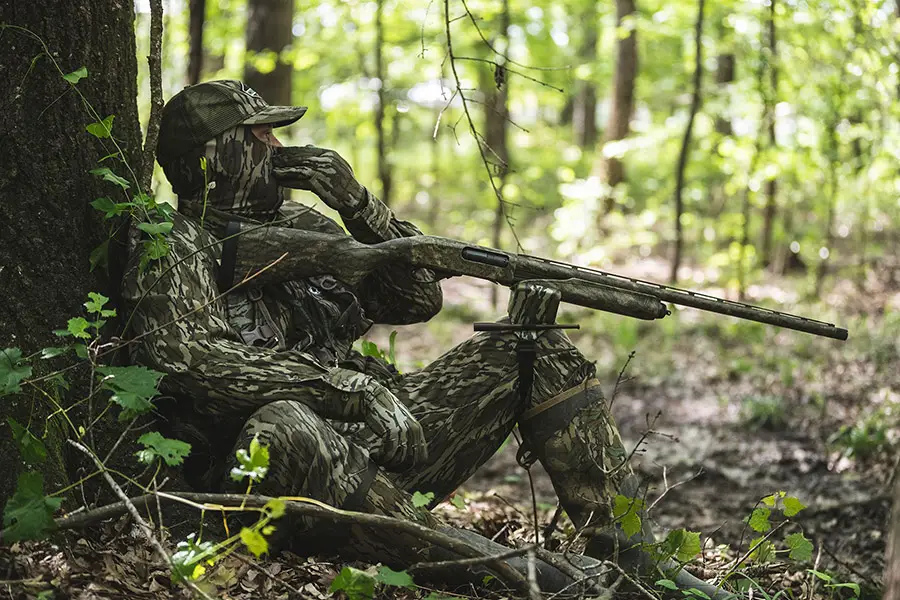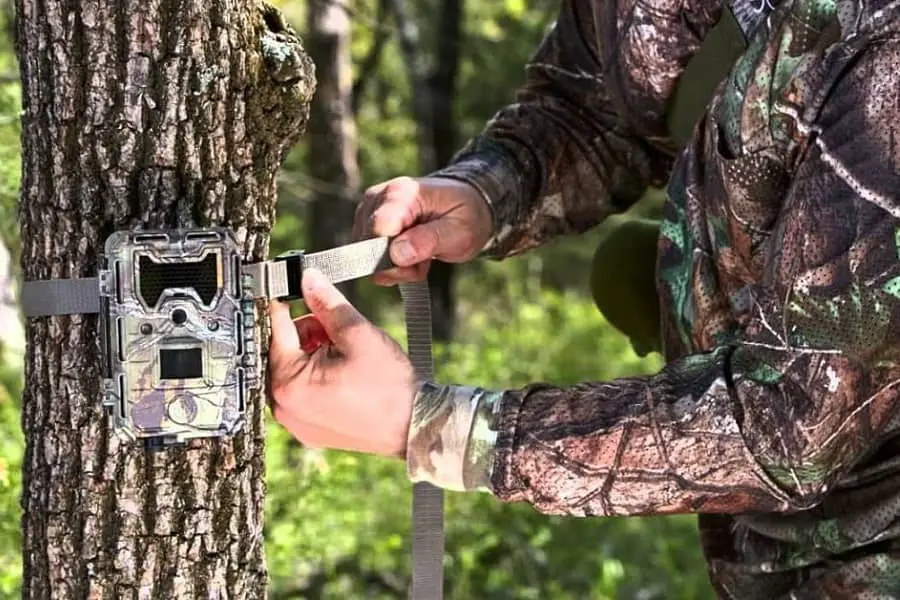Hunters are always after the next best thing, and hunting camouflage gear helps make them invisible to animals.
Because animals’ vision differs from people’s in many ways, it is essential to wear the correct hunting camouflage pattern for the environment in which you’re hunting.
This guide answers many questions about hunting camouflage patterns and how best to conceal yourself from the game you’re hunting.
Blend into the background and become close to invisible, no matter what type of game you’re stalking.
Is Camouflage Important While Hunting?
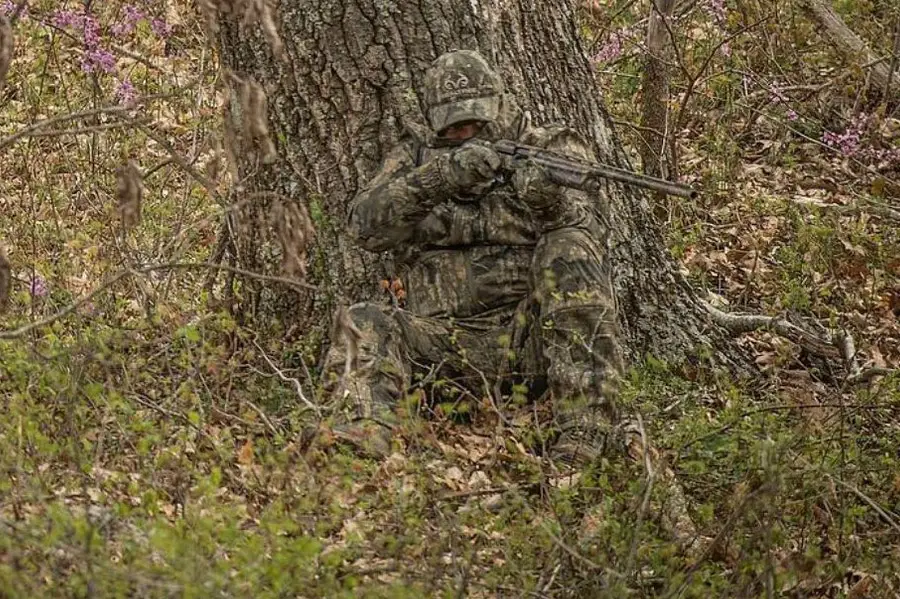
Hunting camouflage has come a long way since blue jeans and flannel shirts. Besides having various clothing options for hunting, material patterns have advanced significantly in terms of hunting camouflage patterns.
Some hunters will debate that you do not need camo clothing to be successful during hunting. This statement is partially accurate, but why not go for something that gives you an advantage?
While hunters have managed to kill many animals over the years without wearing camo gear, concealment has hit the checklist to help make you just a little more successful.
Many animals seem to be more aware of movement than colors or shapes. However, some animals like coyotes and ducks are good at picking up hunters who disguise themselves well, even if they aren’t moving.
Although good hunting camouflage gear that matches your surroundings isn’t necessarily essential for hunting, it definitely wouldn’t hurt your chances. For the most part, camouflage prints are your primary option if you buy clothes designed for hunting these days.
As there are many camo patterns available, whether online or in-store, you can be forgiven if you find overwhelming choices. Let’s examine the four main categories of hunting camouflage patterns and their uses to simplify your decision.
Camouflage Pattern
Camouflage can mean the difference between your success in completing a kill or losing your target. Without the proper hunting camouflage clothing, hunters will likely miss out on enjoying the entire hunting experience.
Unlike most animals, people cannot blend into the environment unless they wear unique clothing. Go through these four helpful hunting camouflage patterns that you should consider wearing when going hunting.
1. Woodland
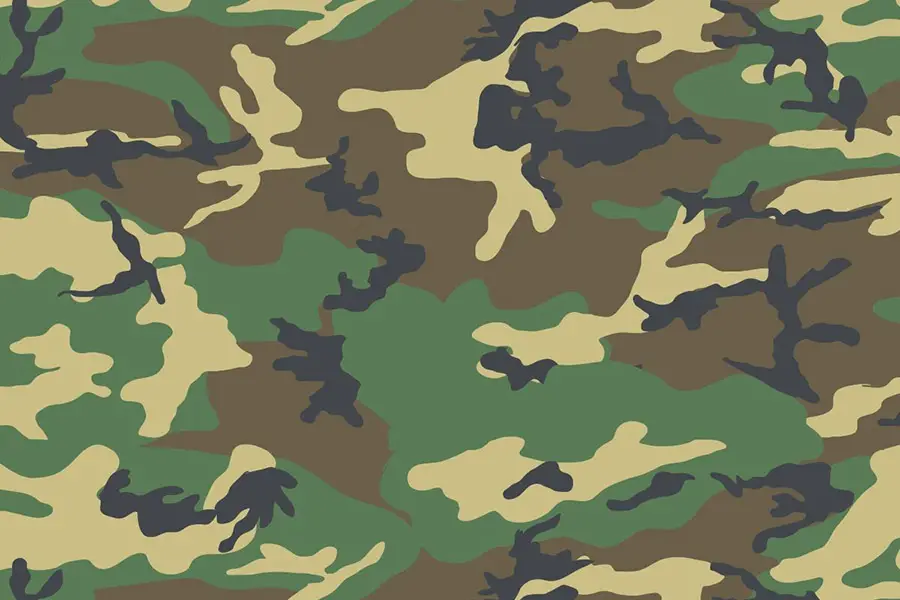
When an inexperienced hunter thinks of camouflage, they are most likely to think of typical woodland camouflage outer gear patterns. However, woodland camouflage isn’t only available in this form.
Woodland camo can come in the form of cloaking heavier clothing and faux foliage over your gear to keep you completely hidden. This camo is excellent for hunting in wooded areas and forests.
2. Brush
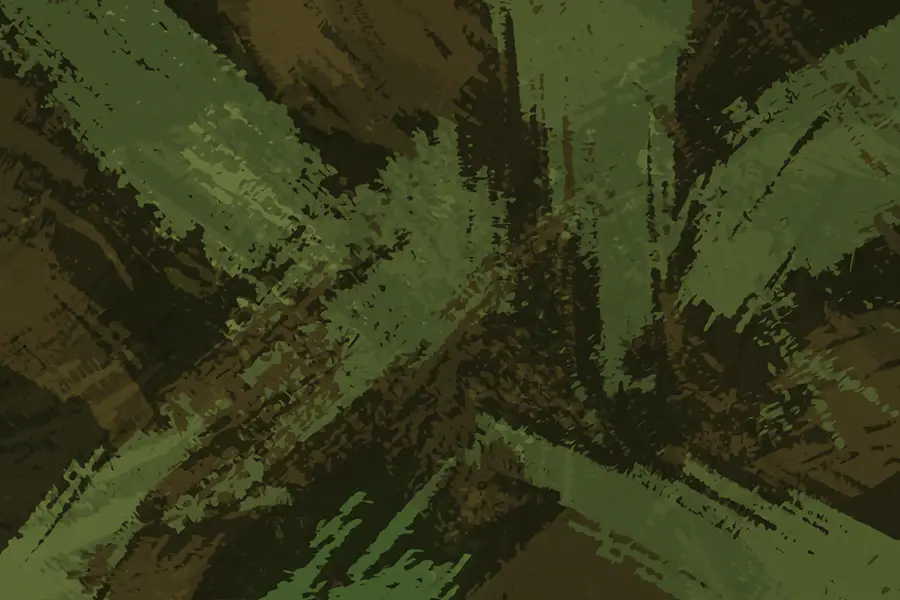
Brush camouflage is camo used for covering hunters who have little to no coverage on barren lands. This camo includes organic, contrasting highlights and darkened spots, mirroring the sun’s natural patterns.
The imagery on brush camo also resembles dead and decaying brush, twigs, grass, and dirt. If your next hunting trip is in desolated lands, it would be a good idea to consider using brush camouflage to keep you well-hidden.
3. Water flow
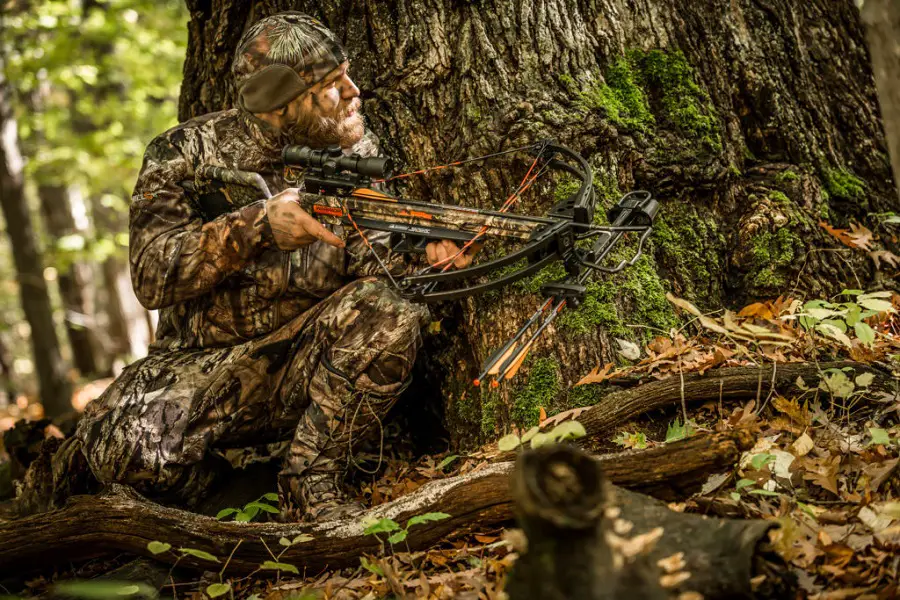
If you are out hunting in the marshes for waterfowl, it’s essential to have a variety of different markings on your outer gear.
Without limitations, this would include strands of wispy wheat stalks, dark greens to resemble waterborne foliage, and water markings resembling the sun’s reflection on the water.
More importantly, you will need to wear waterproof trousers to protect you from hypothermia in the cooler months and from parasites in the waters. Multiple hunting stores have plenty of marsh camouflage patterns to meet your needs and keep you dry.
4. Snow
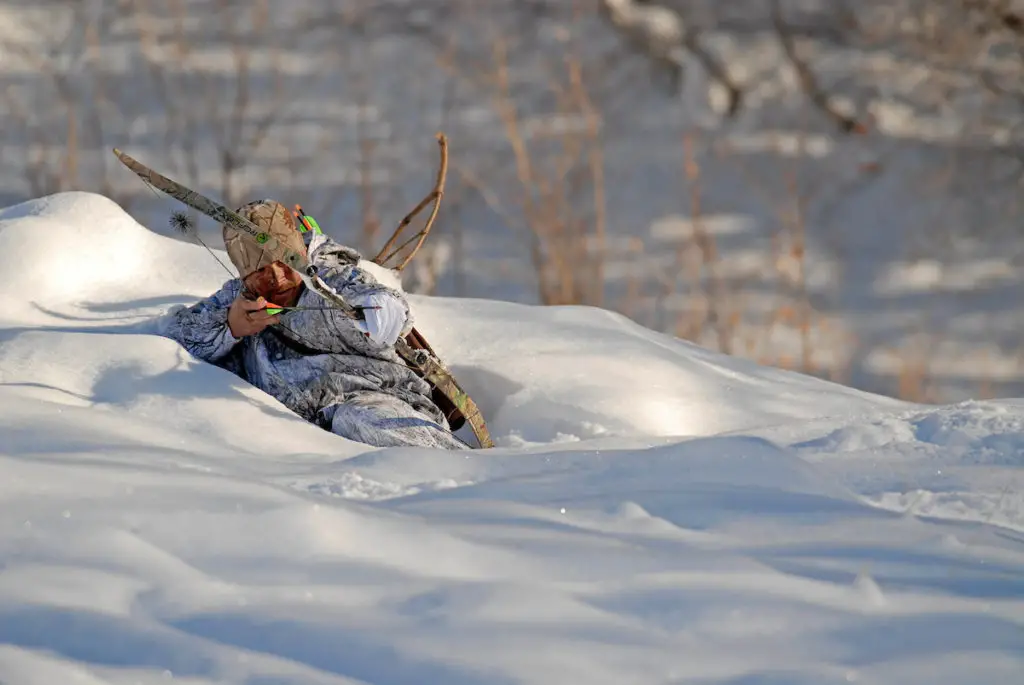
A snow-covered area usually has some brush or foliage peeking through the snow and ice.
Because of the sparse foliage present in this environment, wearing only white camouflage won’t suffice. It will prevent you from completing your disguise, making you visible to your target.
Therefore, snow camouflage designs include imagery of darker tones to represent shadows and plants and lighter whites to depict the sun’s rays reflecting off the snow. The combination of these colors provides perfect coverage for those keen on hunting in snowbound areas.
Choosing The Proper Camo Pattern
Now that the four basic hunting camouflage patterns are out of the way, you still need some information to select the best camo clothing for the environment and the type of species you will be hunting.
1. The Setting
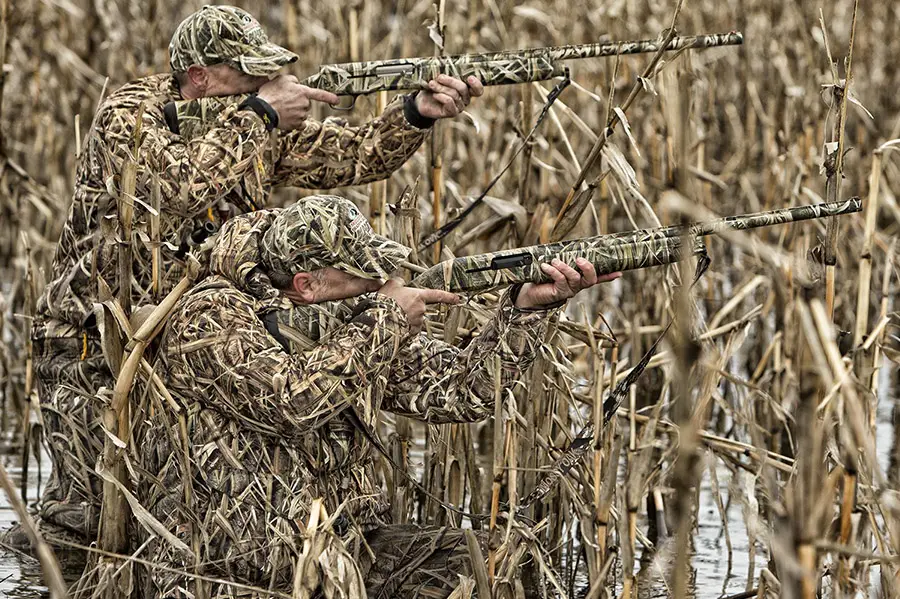
To get the full benefit out of hunting, choosing a camo pattern that best suits your surroundings is advisable.
A dark Mossy Oak pattern will work well in a heavy timber area, but the contrast will reveal your presence in moments if you use it in open or snowy conditions. There can be multiple types of terrain in any given area that all have distinctly different plant life.
The diverse plant life in these areas will also change colors throughout the seasons. Ideally, you could have three to four different sets of hunting camouflage clothing and accessories to disguise yourself in all these areas.
However, this number of camo sets will no doubt be quite costly. Therefore, it is crucial to consider the areas that you mostly hunt in and pick a pattern to match the scenery.
It is also advisable to check out mimicry and digital camo pattern brands that might be ideal for your hunt setting. These new digital camo patterns are versatile as they incorporate various colors, helping you blend in easily with the landscape.
Modern military camo patterns are designed to help conceal people in various settings, despite only needing one pair of fatigues.
Designers of hunting camouflage clothing follow nature when creating their design patterns, making it easier for you to find one that will disguise your presence in most areas.
However, hunting in the snow can change everything, so choose camo clothing with one light and one darker set of color patterns.
2. The Species

As much as you should consider your camo pattern within a specific setting, you should also consider the type of species you’ll be targeting.
Waterfowl is a game bird that occupies various landscapes, most of which are in and around water and flooded fields with tall grass or cattails.
On the whole, the yellow hues of grass blade camo don’t blend in well with most game areas, depending on the season. Also, camo patterns designed for hunting in the woods are much darker and more noticeable in duck hunting areas.
If you are hunting coyotes or other similar prey, a full 3D camo Ghillie suit may work well for you, especially if you are in an area where coverage is limited. The full 3D camo Ghillie suit will make you look like a bush almost anywhere there is vegetation.
Most other hunting camouflage patterns are for big-game hunting situations or prey found in similar areas to the big game, such as turkeys.
Other Ways to Stay Hidden From Your Prey
Concealing yourself while hunting is way more involved than just wearing tiger stripes and digital camo.
Several camo methods can help you optimize your stealth and stalking potential out in the field.
1. Avoid Patterns And Shapes
The human eyes are proficient at picking out patterns, colors, and shapes, but animal eyes aren’t. Irregular shapes and designs are almost invisible to an animal’s eyes.
Therefore, like a Ghillie suit, hunting outfits are patterned similarly to bushes, tall grasses, and shrubbery, providing your clothing with the irregular shapes and patterns you need.
2. Minimize Your Movement And Noise
Knowing and understanding animal senses can improve your concealment tactics.
Stepping on a bundle of dried leaves or a twig is normal to people but is an immediate alarm signal to prey, with their highly developed sense of hearing.
3. Kill Your Scent
Most animals, like deer, have a fantastic sense of smell. If you’re thinking of wearing your favorite aftershave on a hunt, your target will no doubt disappear quicker than you can even spot them.
Your local outdoor stores supply scent killers to disguise your smell and should be in every deer hunter’s backpack.
4. Remove Your Shine
Your skin is prone to light reflection. That is why hunters mark their faces with paint, mud, charcoal, masks, or boot polish to conceal and break up their faces to prevent detection.
Hunters also paint their weapons in matte colors or wrap them in dark cloth to avoid parts of metal from reflecting light and giving away their positions.
5. The Environment is Your Ally – Fit In
Camouflage suits are manufactured for specific purposes and seasons.
Therefore, it is essential to fit into your hunting environment. It would be pointless to hunt in a snowy setting wearing dark desert camouflage patterns, as this will defeat the purpose of your hunting camouflage gear.
So, snowy terrains require white patterns with touches of darker colors. Brushlands require hunting camouflage suits with brown prints, and marshlands or woodlands require you to wear clothing with black and green designs.
6. Use The Terrain to Your Advantage
Learn to optimize the hiding spaces that the wilderness offers. One reason why deer hunting blinds and tree stands exist is for concealment, so you have more access to your target.
Similarly, taking advantage of the terrain and other tricks to disguise your presence means using available resources to enhance your chances of success when hunting.
7. Hide in Secluded Areas
To maximize your camouflage, choose a location that offers loads of cover. Lying in an open field makes you highly visible, and you risk being easily spotted by prey and other hunters.
In contrast, secluded areas such as shrubbery and bushes offer excellent cover because they enable you to blend in with the environment.
Taking cover in shrubbery also helps to block out light, preventing reflections that animals can quickly identify. In low light, your presence is almost indiscernible from the surroundings, making this an effective concealment technique.
Concealment also requires more than just selecting camo hunting patterns. An effective hunter understands his surroundings, the prey, their developed senses, and how to disguise their presence from the animals that move into their hiding space.
Will My Body Smell Give Me Up?

Everyone has a scent, whether you realize it or otherwise.
However, most people can’t detect their body odor because people are just not wired that way–not to mention that humans have a much poorer sense of smell than wild animals such as deer, elk, and bear.
The bad news for hunters is that they can’t do anything to get rid of their odor completely. You can scrub and wash all you want, but the game will still detect your presence–and if the game gets a whiff of your scent, you’re out of luck.
When you’re out in the field, your best bet is to try to hide your scent from wild animals. Numerous products on the market claim to effectively mask your scent, but not all of them work.
Check these tips on how you can mask your body scent while hunting.
1. Avoid Unnatural Perfumes
Wild animals can easily detect a person’s scent. With this in mind, it is critical not to aggravate your situation by introducing strange smells that increase the likelihood of an animal detecting your presence.
If you want to remain undetectable while hunting, avoid detergents, gasoline, cigarettes, coffee, aftershave, and soaps as they are dead giveaways.
2. Reduce Body Odor
The human scent should not be confused with body odor. Body odor is produced by bacteria developing when you sweat. Using a soap containing bacteria-killing enzymes is one way hunters can reduce body odor.
When you sweat, these soaps can help prevent bacterial growth. However, use unscented soap and shampoo for your daily grooming. Another thing you can do is dress in layers to avoid overheating and sweating.
3. Dress to Reduce Smell
Clothing can also help reduce the likelihood of animals smelling you. Scent control hunting clothing helps prevent the growth of bacteria on your body.
With fewer bacteria to increase your body odor, animals are less likely to detect your presence, making a significant difference to your hunting experience.
4. Natural Smells

Use a natural scent that is familiar to animals and will not alert them to your presence.
Rubbing dirt, leaves, and other natural materials on your clothing can help attract animals to that scent or at least prevent them from dashing off.
Natural materials typically have more potent odors than people. Although natural outdoor vegetation won’t completely cover up your scent, it will help prevent animals from noticing you.
5. Overload
Sprays known as receptor overload are among the many products available to help mask odors.
These sprays confuse animals because it overloads their systems with so many different smells that they cannot process them.
As a result, their brain ignores the smells, masking your scent from the animal.
6. Stay Downwind
It may seem obvious but keeping your scent away from the animals you are hunting is the best way to mask your smell.
Check the wind direction before you start hunting, and make sure you are downwind of any wild game that you approach. This technique is simple, but it works well even on days when there is little wind.
Conclusion
Because there are so many different hunting environments, most of which change color throughout the year, there is no single correct answer for hunting camouflage to use in any given region.
Before you go hunting, think about the areas you’ll be hunting in the most and the existing foliage and landscape.
Then, choose a pattern that complements the colors reasonably well. Even if the available hunting camouflage isn’t quite suitable for the terrain, it’s still better than blue jeans and flannel shirts.
Resources:


